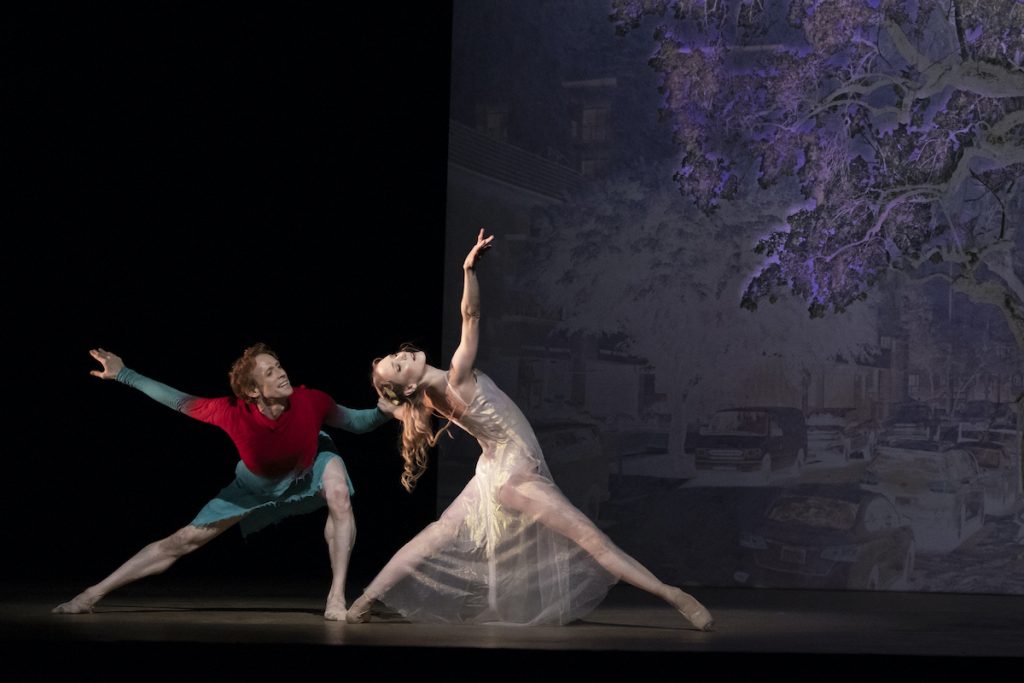The title of this full-length, three-part ballet is somewhat coy and misleading. While not a full narrative account of Dante’s ‘Divine Comedy’ it is epic in scale in every other respect and quite the most ambitious project from the Royal Ballet in recent years, initiated before the pandemic hit and then brought to fruition in October. This delayed streaming has the great advantage of permitting repeated viewings of a complex work that repays close study and appreciation.
The first and longest section, ‘Inferno: Pilgrim’ introduces Dante and his guide Virgil to the sinners and lost souls of the Underworld. This is an altogether stunning fifty-minute sequence, where all the theatrical arts fuse together powerfully. Dante (Edward Watson) and Virgil (Gary Avis) are mainly spectators to series of episodes in which groups, couples and soloists involving all the current lead principals of the Royal Ballet perform highly contrasted stories and engage with a broad palette of moods. Wayne McGregor’s choreography is quite classical here, as is the scenario in which a scene is set and onto this platform a varied array of dance sequences is poured. The score by Thomas Adès takes fragments of music by Liszt and reworks them into a pattern of incisive rhythms, and colourful instrumentation entirely in keeping with the lurid life incidents on display. An awe-inspiring backdrop by Tacita Dean presents Hell in strikingly unfamiliar terms, all granite and ice, an apparently inverted mountainscape. Together with brilliant lighting effects this creates a complete and coherent world of its own and could stand as an independent ballet.

The tone is cooler in the second and shortest section, ‘Purgatorio: Love’, in which Dante recalls his childhood love for Beatrice in a series of wistful encounters with various incarnations of them both. There are some exquisitely delicate sequences for both adult and child dancers and the choreography channels Watson and Avis in the direction of an affecting simplicity, mirrored in Francesca Hayward and Sarah Lamb’s graceful but also withholding, reticent representations of Beatrice. The music too has clear simple lines with penitential chanting that embodies the tone of regret. The final act, ‘Paradiso’, is in some respects the highest achievement of the evening. Abstraction is by definition difficult to render memorably; but again, the collaborative creativity on offer here is first-rate. A video projection of concentric circles, with constantly shifting colours like a kaleidoscope, floats above the dancers, who now all represent celestial bodies in shiny white cat suits. There is a shifting, cumulative ecstatic quality to the shimmering music suggesting Copland and the Tippett of ‘The Midsummer Marriage.’ A final encounter between Dante and Beatrice has a glorious plasticity of overlapping limbs in movement that evokes the shade of Kenneth Macmillan, before Watson is left alone in a shaft of light, an appropriate way to symbolise the isolation of the poet in exile and the end of a peerless career as a principal dancer.
A short review cannot do justice to the many creative layers successfully presented here, but in addition to those already highlighted, one must mention the crucial role played by the lighting design of Lucy Carter and Simon Bennison in creating the unique look of each of the three separate worlds, the virtuosic solos of Calvin Richardson and Fumi Kaneko, and above all the expressive power and classical poise of the choreography, one of McGregor’s most astonishing achievements.
This production is a visual and sonic feast in which the individual performances are magnificent but where the collective whole is even greater. In that sense it is very much in tune with the message of ‘The Divine Comedy’ itself which seeks to excavate the interconnectedness of human experience through pushing back the limits of imagination.

